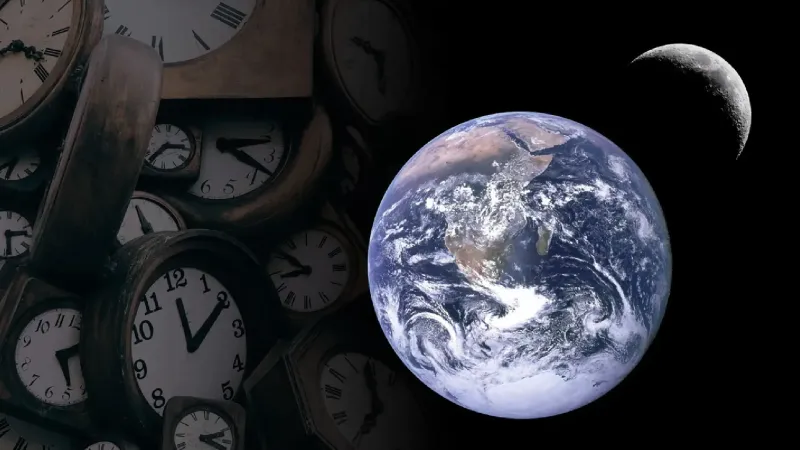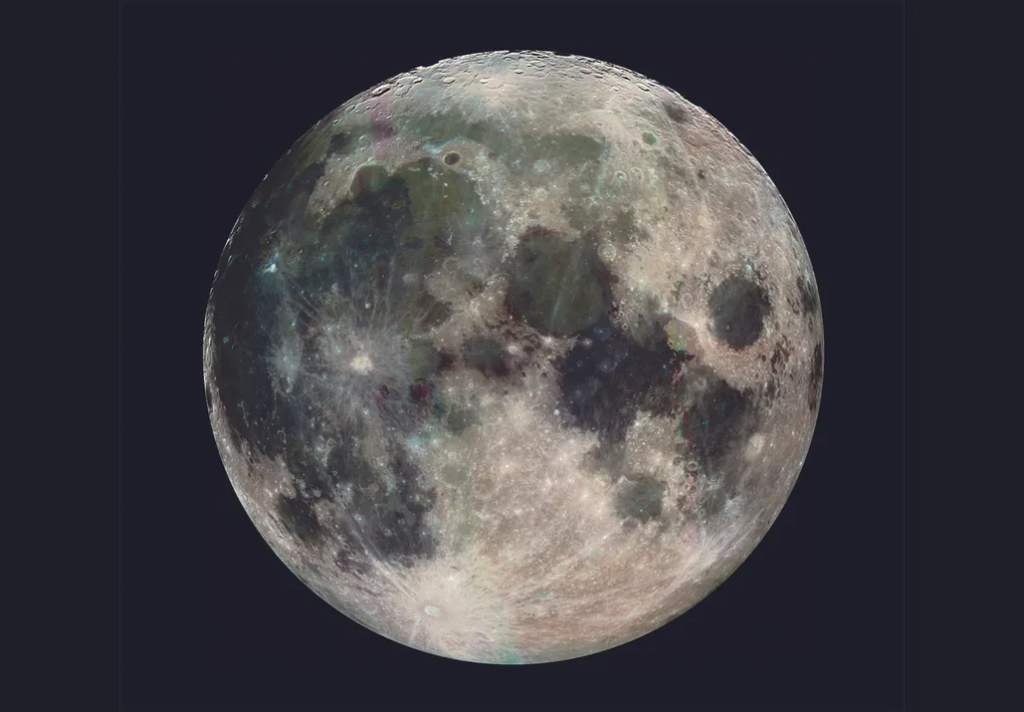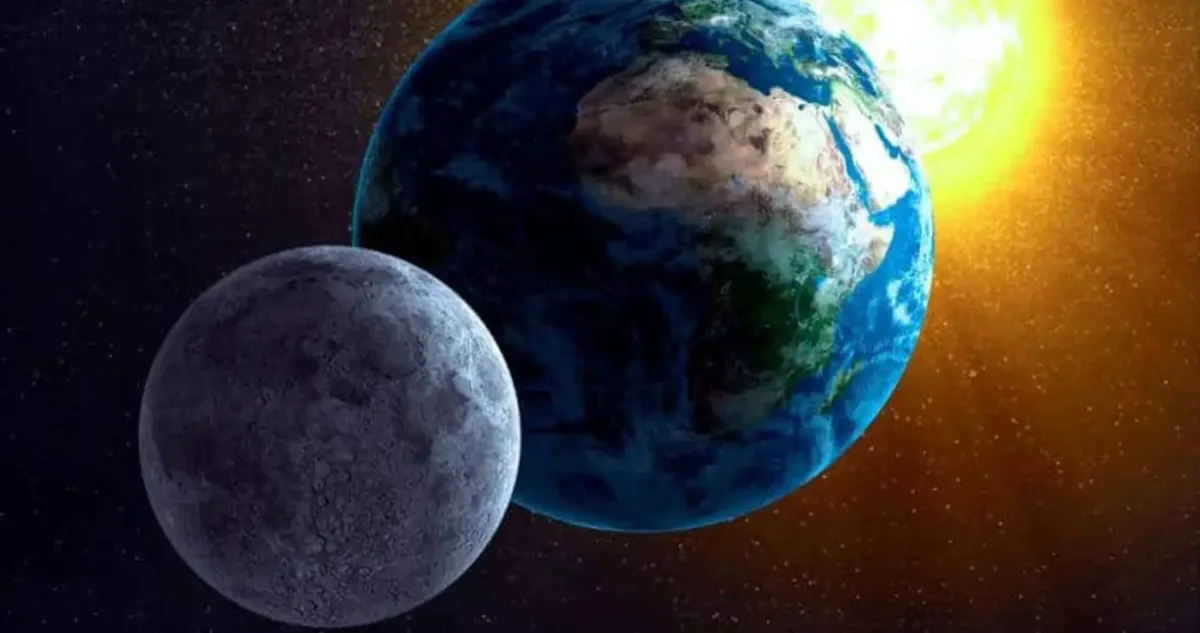Moon’s Temperature Dipped 8-10 Kelvin During COVID Lockdown in 2020, Moons’ temperature witnessed an unexpected dip during the global COVID-19 lockdowns, as revealed by a recent groundbreaking study conducted by Indian researchers.
This discovery has shed light on the surprising interconnectedness between Earth’s atmosphere and its nearest celestial neighbor, highlighting how even global events on Earth can influence the Moon’s temperature.
The study, published in the Monthly Notices of the Royal Astronomical Society: Letters, provides key insights into the cosmic effects of human activity during one of the most unprecedented times in modern history.
COVID-19 Lockdowns and Moon’s Temperature Dipped
The Moon’s Temperature Dipped, measured between April and May 2020, was observed during the strictest period of global lockdowns. The Indian team, led by K Durga Prasad and G Ambily from the Physical Research Laboratory (PRL), analyzed temperature data from NASA’s Lunar Reconnaissance Orbiter for six different sites on the Moon’s nearside.
Read : China’s Wuhan Lab Once Blamed for COVID-19 Creates Nasal Vaccine for Future Pandemics
Their findings revealed that the lunar nighttime surface temperatures experienced an anomalous dip of 8-10 Kelvin during the height of the lockdown period.
Read : Covid-19 Still Kills 1,700 a Week Around the World: WHO
This temperature reduction was correlated with the sharp decrease in Earth’s outgoing radiation due to the global lockdowns. The dramatic reduction in human activity during this time led to a significant decrease in greenhouse gas emissions and aerosols, which in turn reduced the amount of heat being trapped and re-emitted by Earth’s atmosphere.

This lower level of outgoing radiation from Earth is believed to have had a measurable effect on moons’ temperature, causing the drop in nighttime temperatures on the lunar surface.
Unveiling the Cosmic Connection
The study’s findings mark a significant moment in our understanding of how human activities on Earth can affect the Moon. As the researchers examined data from the Lunar Reconnaissance Orbiter for the years 2017 to 2023, they discovered that the moons’ temperature in 2020 was consistently lower during the lockdown period compared to other years.
The coldest recorded temperature during this time was 96.2 Kelvin at one of the sites, while other sites displayed similar anomalies, all pointing toward the unique cosmic effects of the 2020 lockdown.
This discovery highlights how interconnected Earth and its celestial neighbor truly are. The moon, despite its distance and lack of atmosphere, responded to changes in Earth’s radiation output during the lockdown.
The study provides a fascinating glimpse into how variations in human activity on Earth can manifest in measurable ways beyond our planet.
The reduction in outgoing radiation during the lockdown was unprecedented, and moons’ temperature responded to this change in a way that offers new opportunities for scientists to explore the cosmic connections between Earth and the Moon.

As emissions and aerosols decreased due to reduced industrial and transportation activities, the overall energy exchange between Earth and space was affected, and this, in turn, influenced the temperature of the lunar surface.
The Future of Moon-Based Climate Monitoring
While the research shows a clear correlation between Earth’s radiation and moons’ temperature, the authors of the study also emphasize the need for further data to fully understand the extent of this relationship.
The temperature variations across different sites on the Moon during the lockdown period were significant, but more data is needed to solidify the link between Earth’s environmental changes and the lunar temperature shifts.
The researchers suggest that future Moon-based observatories could play a crucial role in studying Earth’s climate and environmental shifts.
By monitoring changes in moons’ temperature over time, scientists may gain valuable insights into how Earth’s atmosphere influences nearby celestial bodies. This could lead to innovative approaches to monitoring Earth’s environmental health from space, using the Moon as a cosmic vantage point.
In 2020, the global lockdowns provided scientists with a rare opportunity to observe how changes in human activity can have far-reaching effects beyond Earth. This discovery also opens up new possibilities for understanding Earth’s climate system and how it may be linked to phenomena in space.
As human activity resumed in 2021 and 2022, the study recorded a warming trend on the lunar surface, indicating a return to higher temperatures as Earth’s outgoing radiation levels increased.

The overall temperature at one of the sites reached as high as 143.8 Kelvin in 2022, further suggesting that changes on Earth can influence moons’ temperature in measurable ways.
This connection between Earth and the Moon could have broader implications for future research on climate change and environmental shifts.
The study underscores the importance of monitoring Earth’s environmental health not just from within the atmosphere, but also from a cosmic perspective. As technology advances and we continue to explore space, the Moon may serve as a valuable tool for studying how human activities on Earth affect the broader cosmic environment.
Moons’ temperature experienced an unexpected dip of 8-10 Kelvin during the strict COVID-19 lockdowns of 2020, as discovered by Indian researchers.

This groundbreaking study highlights the profound impact that changes on Earth can have on its celestial neighbor. As global emissions and aerosols decreased during the lockdowns, Earth’s outgoing radiation dropped, leading to cooler lunar nighttime temperatures.
This discovery offers a unique perspective on the interconnectedness between Earth and the Moon, shedding light on how even global events such as the COVID-19 pandemic can have cosmic effects.
As we continue to explore the relationship between Earth and its neighboring celestial bodies, studies like this pave the way for new approaches to monitoring climate change and environmental shifts from space.
Future Moon-based observatories could provide valuable data on Earth’s environmental health, offering a cosmic vantage point for understanding how human activities on Earth influence the broader universe.

